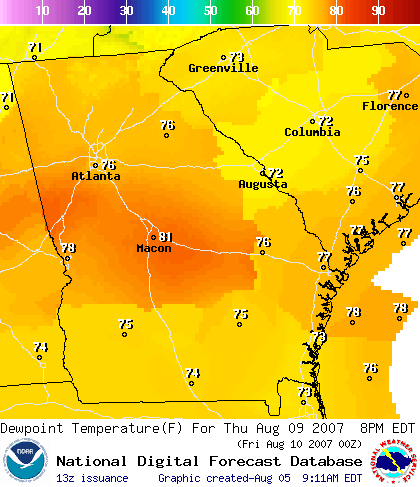Temperature Records Fall in North Georgia
Monday, July 20th, 2009Extremely unusual weather for mid-July has broken low temperature records around the state, with much of Georgia seeing late September like weather during what is normally the warmest stretch of the year.
On Sunday, Atlanta tied a record low of 63 degrees, set in 1967. The low in Athens of 58 beat the prior record of 62 set in 1925. In Columbus, it was 62 degrees Sunday morning, breaking the previous low of 66, set in 1987. And in Macon, a low of 58 beat the old record of 61, set in 1967.
Monday morning’s low of 61 in Atlanta tied the previous record, set in 1946. In Athens, a low of 60 degrees broke the almost 100 year low record of 61, set in 1910. In Columbus, a low of 64 also tied the previous record, set in 1946. And in Macon, a low of 61 beat the previous low of 62, set in 1987.
There’s another chance for record lows tomorrow morning before the weather starts returning to normal during the latter part of the week. A stationary front located near the Georgia-Florida border is keeping the normal summertime humidity from the Gulf coast from moving north, and the exceptionally dry air is letting daytime heat escape into the clear night skies.
The normal high for July 20th is 88 degrees, and the normal low is 70.
Sphere: Related Content

